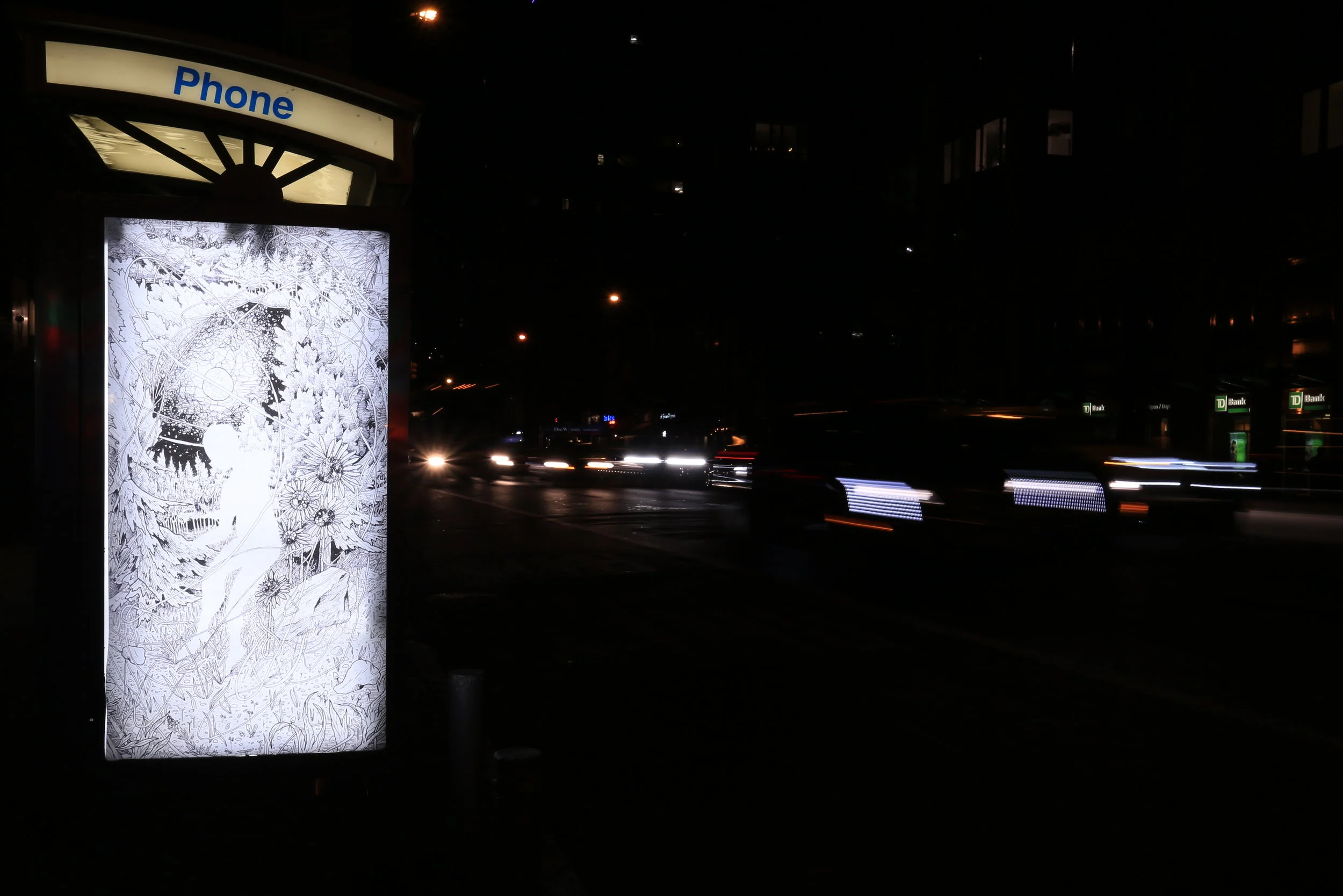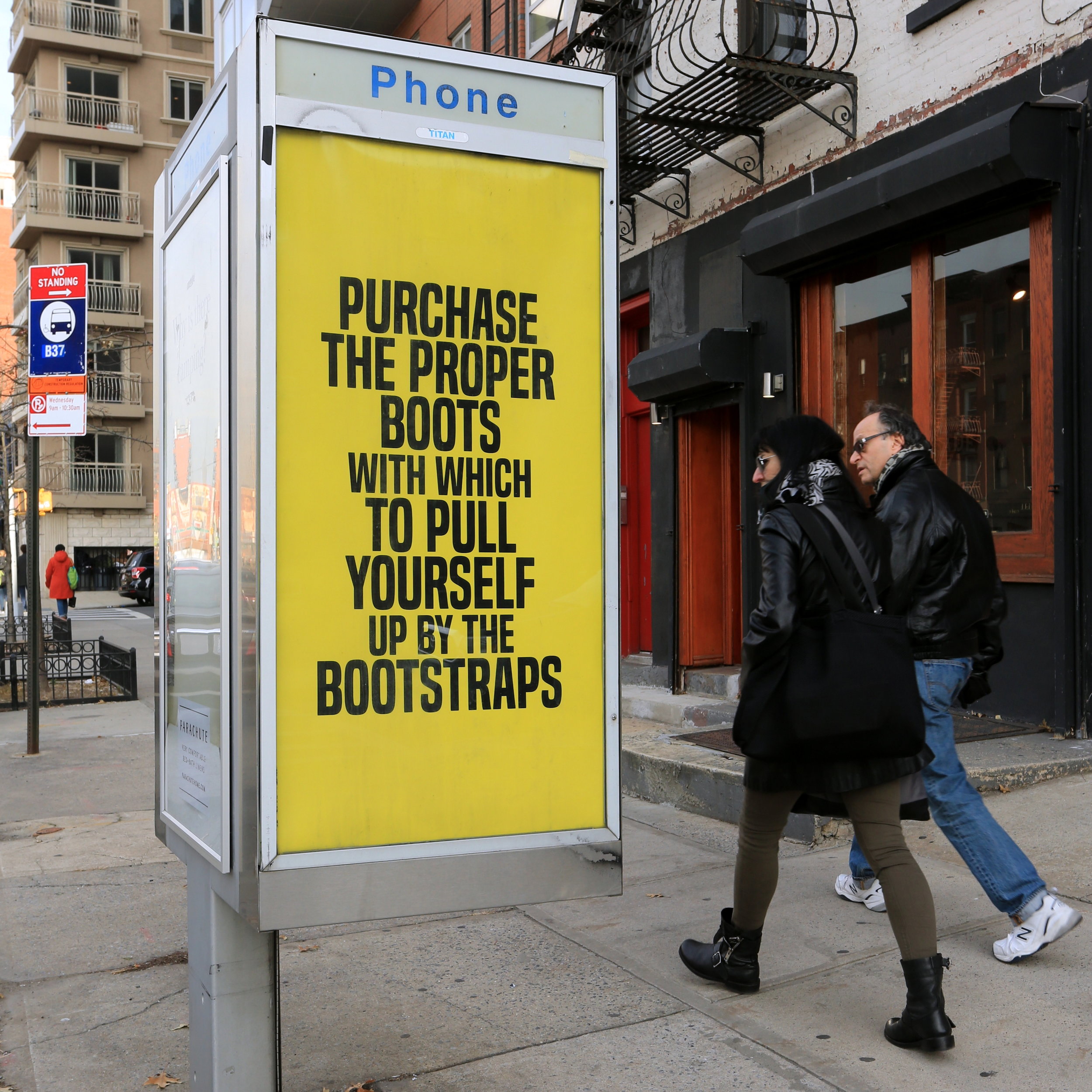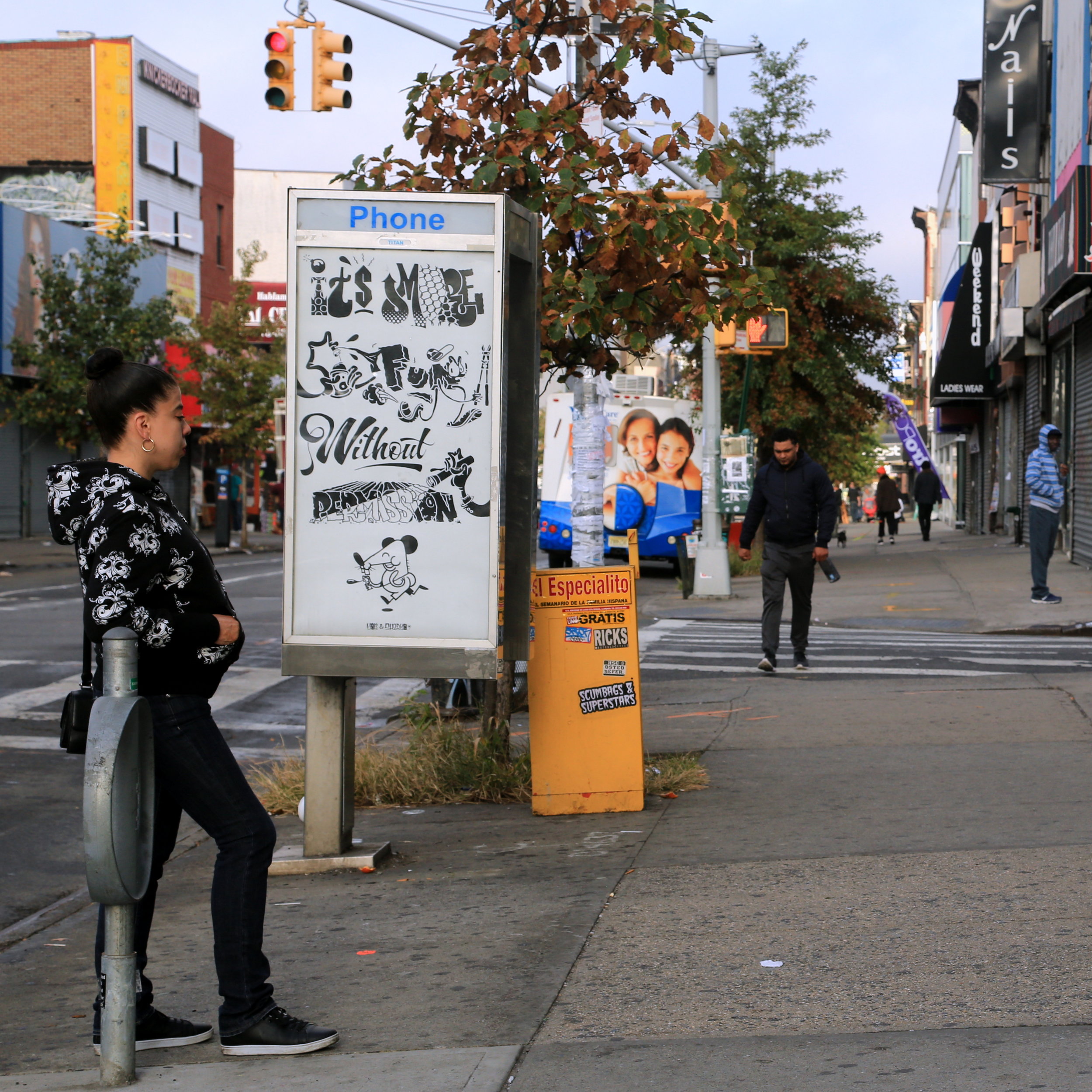Purchase the Proper Boots With Which to Pull Yourself By the Bootstraps by Kameelah Janan Rasheed. Photo by Luna Park.
This past week, we've seen the myth of American meritocracy on full display for the lie it is. Politicians and their wealthy donors are about to overhaul the tax system to give their children even greater inheritances, while simultaneously increasing the costs of higher education and health insurance, all further cementing existing structures of privilege.
With that tax bill on the horizon, it feels especially fitting to install this poster by Kameelah Janan Rasheed, who says "'Purchase the Proper Boots With Which to Pull Yourself By the Bootstraps' is one of four posters from the 2014 project How to Suffer Politely (and Other Etiquette), a series of satirical gestures. How to Suffer Politely (and Other Etiquette) examines how expressions of anger and resistance to racialized violence are regarded as 'impolite' in order to maintain social order. Informed by etiquette guides that advise one to prioritize the needs of others before one’s own, these satirical sayings command the performance of exceptional self-control and triumph under traumatic circumstances. Inserted into public spaces in the place of advertisements, 'Purchase the Proper Boots With Which to Pull Yourself By the Bootstraps' acts as a not so polite intervention of traditional ad signage."
Advertising is deeply intertwined with American ideals of selfishness, consumption, and debt, and the myth of a meritocracy. From an early age, we're taught to buy more, to buy for ourselves, to judge others on the things they own, and that we all start out on equal footing. That doesn't come only from advertising, but ads both rely on and reinforce those concepts. Beyond that, as Rasheed points out, advertising reinforces the worst of our prejudices.
Purchase the Proper Boots With Which to Pull Yourself By the Bootstraps is a satire in the vein of the billboards in They Live. But, with the way we cling to the myth that "anyone can make it in America" and define ourselves by the things we buy, you've got to wonder... if Timberland stole Rasheed's language and added a logo, would it sell boots?








